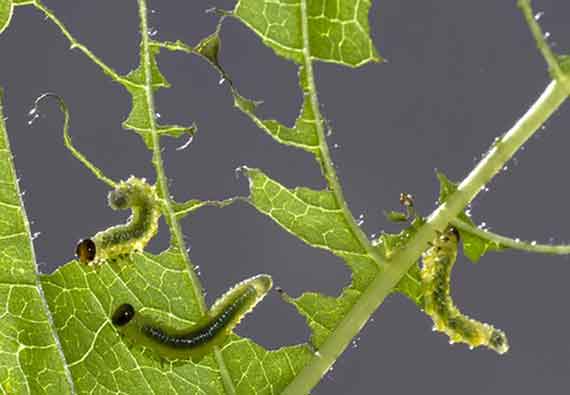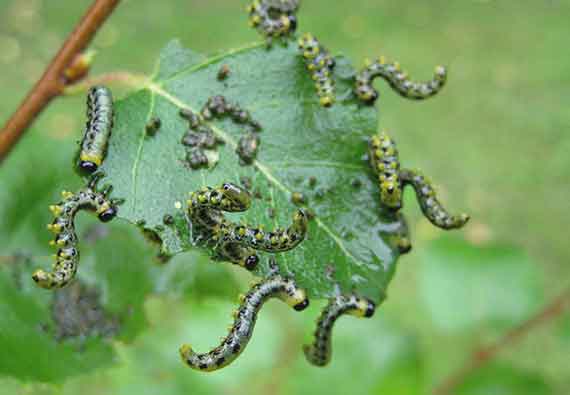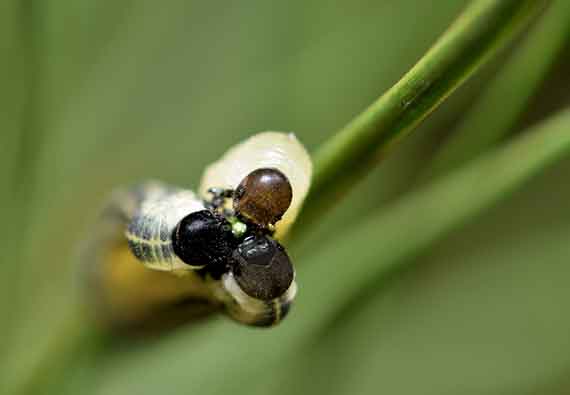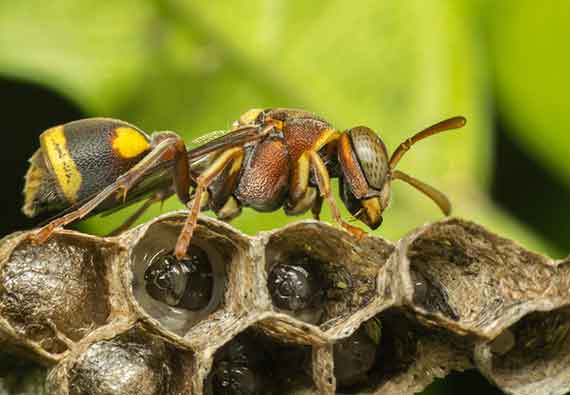Sawfly larvae look like little slugs then they slowly start looking like caterpillars and then eventually end up looking like a cross between a fly and a wasp. Considering the fact that an adult sawfly looks like a wasp, does a sawfly sting?
Strangely enough, no, Sawflies do not sting. In fact, they are often referred to as stingless wasps. These little insects get the common ‘wasp’ name from the way they look. Females have an ovipositor that unfolds like a jackknife. This functions like a saw blade which allows the female to cut through host plant stems to deposit her egg. Although this feature does look a lot like a stinger, it really poses no harm to humans or their pets.





